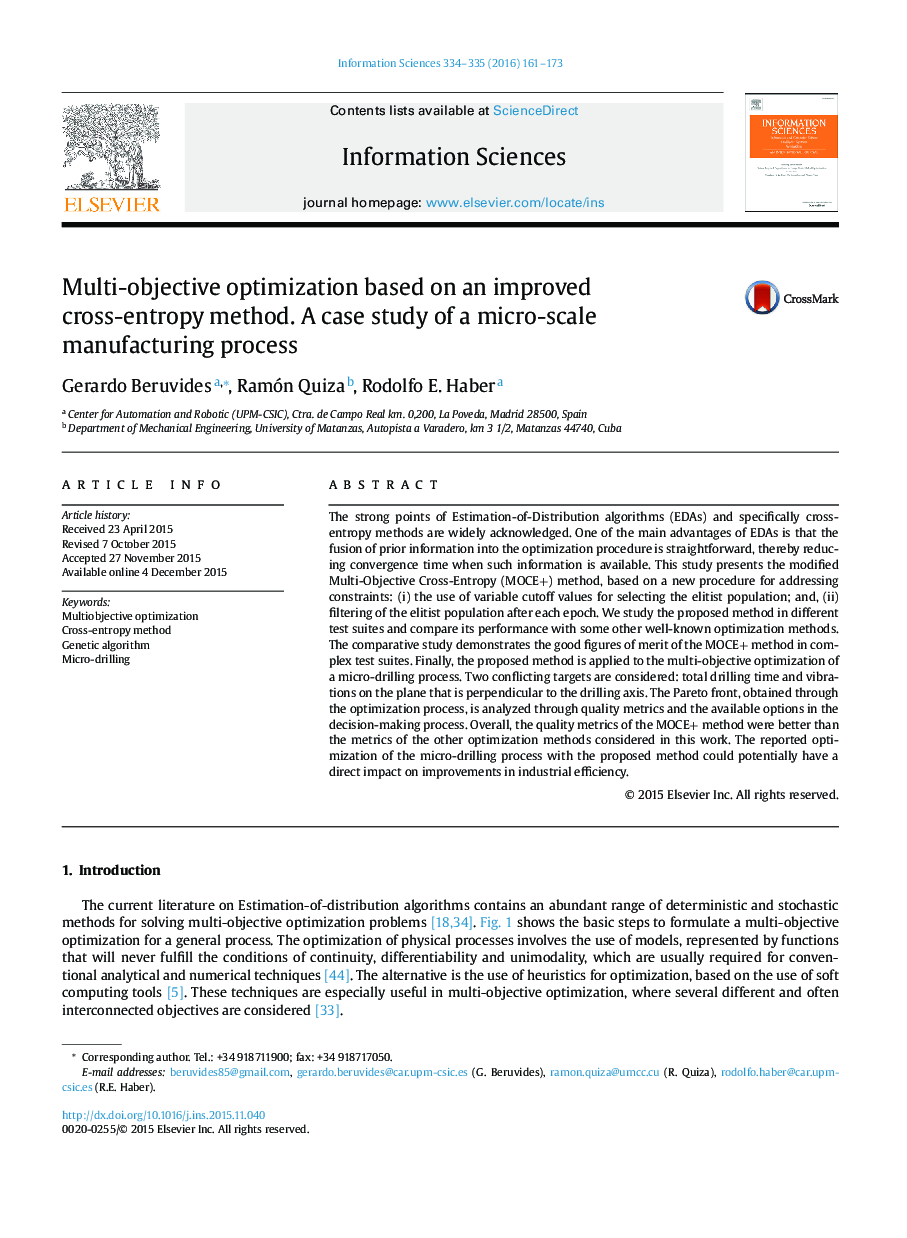| کد مقاله | کد نشریه | سال انتشار | مقاله انگلیسی | نسخه تمام متن |
|---|---|---|---|---|
| 392671 | 665147 | 2016 | 13 صفحه PDF | دانلود رایگان |
The strong points of Estimation-of-Distribution algorithms (EDAs) and specifically cross-entropy methods are widely acknowledged. One of the main advantages of EDAs is that the fusion of prior information into the optimization procedure is straightforward, thereby reducing convergence time when such information is available. This study presents the modified Multi-Objective Cross-Entropy (MOCE+) method, based on a new procedure for addressing constraints: (i) the use of variable cutoff values for selecting the elitist population; and, (ii) filtering of the elitist population after each epoch. We study the proposed method in different test suites and compare its performance with some other well-known optimization methods. The comparative study demonstrates the good figures of merit of the MOCE+ method in complex test suites. Finally, the proposed method is applied to the multi-objective optimization of a micro-drilling process. Two conflicting targets are considered: total drilling time and vibrations on the plane that is perpendicular to the drilling axis. The Pareto front, obtained through the optimization process, is analyzed through quality metrics and the available options in the decision-making process. Overall, the quality metrics of the MOCE+ method were better than the metrics of the other optimization methods considered in this work. The reported optimization of the micro-drilling process with the proposed method could potentially have a direct impact on improvements in industrial efficiency.
Journal: Information Sciences - Volumes 334–335, 20 March 2016, Pages 161–173
